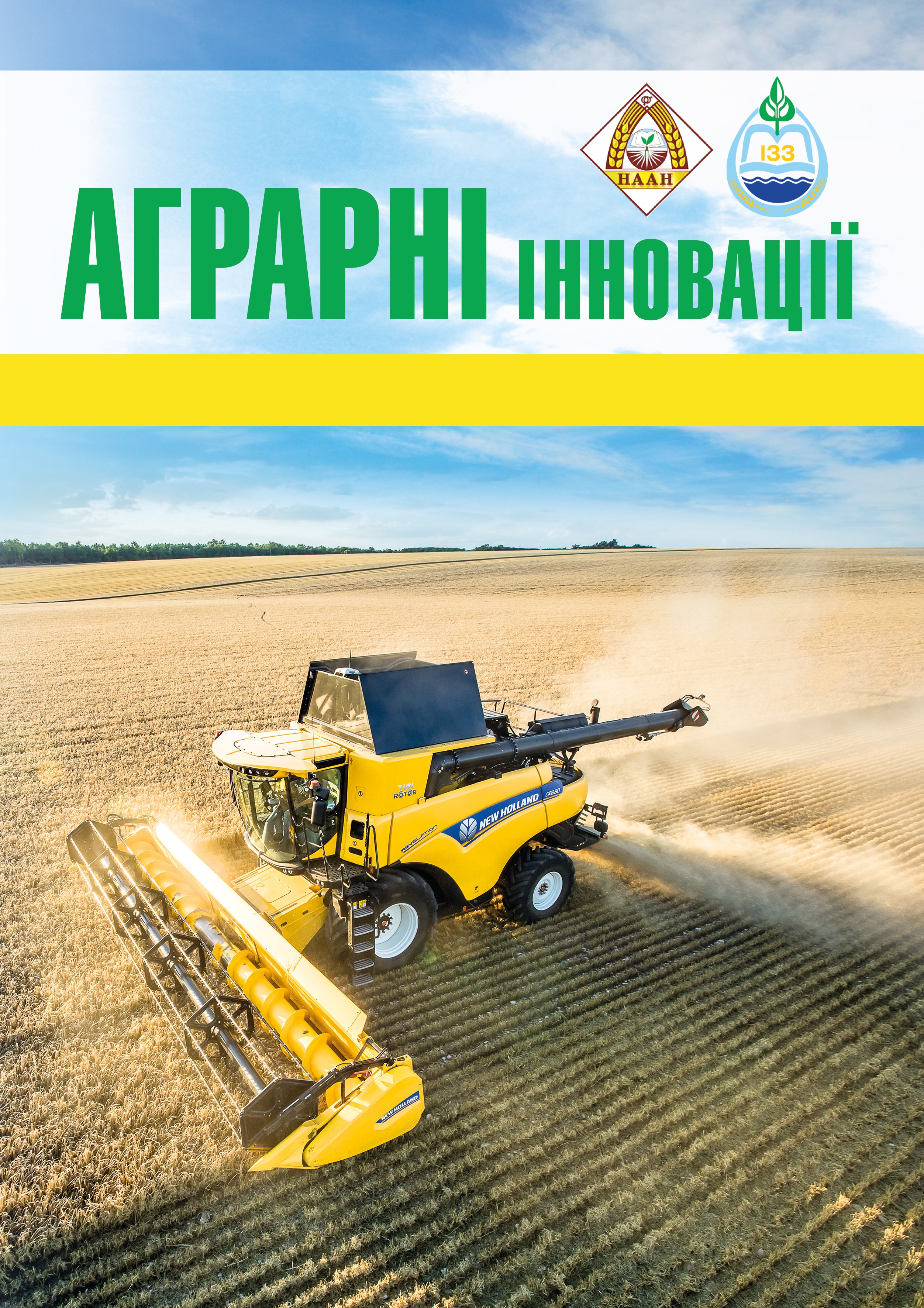SPECIFICS OF NUTRITIENT CONSUMPTION BY COMMON FLAX UNDER DIFFERENT MOISTURE CONDITIONS IN THE AREA OF THE DRY STEPPE OF UKRAINE
Abstract
The study is aimed at examining the dynamics of nitro-gen, phosphorous and potassium consumption by common flax crops under conditions of natural and artificial mois-tening and the relation of these processes to the formation of the crop biomass. The research conducted in the area of the dry steppe of Ukraine under conditions of Askaniia SARS of the NAAS. Plant samples were selected with the interval of 10 days after the stage of “complete shoot-ing” in two non-adjecents replications from the area of 0.1 m2 and dried to permanent weight under the temper-ature of 105 оС. Nitrogen, phosphorus and potassium con-tents were determined in a single extract after wet burning by Ginsburg’s method with further measurement of nitrogen by Kjeldahl’s method, phosphorus by Murphy-Riley’s colori-metric method with the Photoelectric Colorimeter-2, and pot-tassium – with a flame photometer. Only aboveground plant parts underwent registration and analysis. Correlation anal-ysis made it possible to determine a high degree of cor-relation between biological consumption of the nutrients and the amount dry R=0.94–0.98 abovegound weight. Irrigation and an increase in mineral nutition cause a rise in aboveground plant weight resulting in an increase in the amount of nutrients consumed. There was a shift in the period of maximum nitrogen consumption to 10 days as a consequence of the extended An increase in nutrient consumption by common flax crops per day, for non-irrigated and irrigated conditions respectively, was within 30–50 and 30–60 days after the crop germination. The largest amount of nitrogen – 3.07 kg/h, phosphorus – 1.04 kg/ha and pottassium 2.57 kg/ha under non-irrigated conditions was consumed by the common flax crops during the fourth decade and under irrigation – 3.23; 1.59 and 3.67 kg/ha respectively during the fifth decade after the stage of “complete shooting”.vegetation period against the background of application of mineral fertilizers and irri-gation.
References
2. Губенко Л.В. Вплив системи удобрення на продуктивність ріпаку озимого за різних способів обробітку ґрунту. Збірник наукових праць ННЦ «Інститут земле-робства НААН». 2018. Вип. 4. С. 3–10.
3. Рудик А., Рудик Н. Агроэкологические аспекты размещения и использования льна масличного двой-ного назначения в Украине. Elimy News is the Researching of Natural Sciences. Lankaran, 2019. Vol. 1. P. 114–121.
4. Кузнецова Г.Н. Оптимизация минерального пита-ния льна масличного в Южной Лесостепи Западной Сибири : автореф. дисс. ... канд. с.-х. наук : 06.01.04. Омск, 2004. 18 с.
5. Шваб С.Б., Мирончук В.П. Врожайність льону олійного залежно від норм висіву насіння та удобрення. Землеробство : міжвід. темат. наук. зб. Київ : «ЕКМО», 2007. Вип. 79. С. 110–114.
6. Вешнівська Ю.С. Вплив системи удобрення на структуру та врожайність сортів льону олійного. Збірник наукових праць ННЦ «Інститут землеробства НААН». 2011. № 3–4. С. 92–96.
7. Махова Т.В., Поляков О.І. Вплив агроприйомів вирощування на елементи продуктивності та врожай-ність льону олійного сорту Ківіка. Науково-технічний бюлетень ІОК НААН. Запоріжжя : Дніпровський мета-лург, 2013. Вип. 18. С. 113–117.






